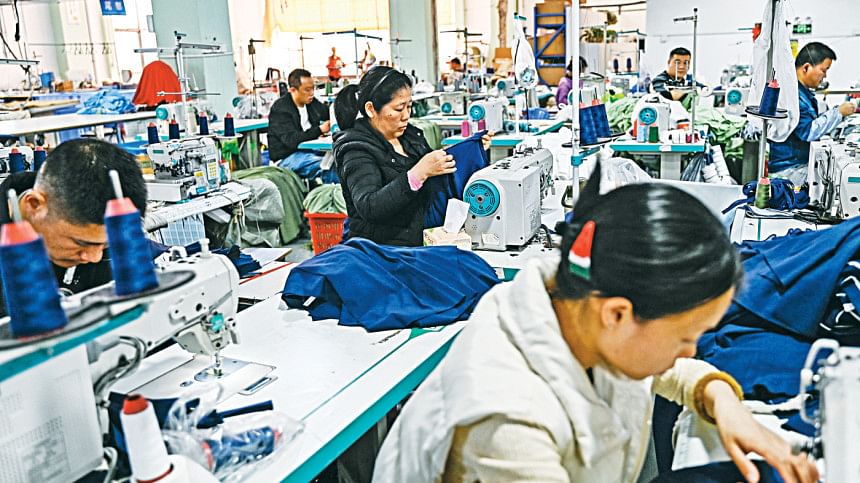New US Asia pivot is better timed than the last

In 2011, US President Barack Obama announced America's "pivot to Asia"– only for conflicts from Afghanistan to Ukraine to bog him down. In Brussels last week, however, newly installed Defense Secretary Pete Hegseth renewed the United States's pledge to refocus on China. It might seem that Uncle Sam has left it a bit late, given the Middle Kingdom's rise in the intervening years. Yet emerging fault lines in China's economic strategy suggest that now might be an opportune moment for the pivot after all.
US Vice President JD Vance's speech at last week's Munich Security Conference hogged the headlines. Yet Hegseth's earlier remarks at NATO's Brussels headquarters contained the more practical pointer to the future of geopolitics. His message was unambiguous: "stark strategic realities prevent the United States of America from being primarily focused on the security of Europe." Chief amongst those realities is China, which Hegseth called a "peer competitor" with the "capability and intent to threaten our homeland and core national interests in the Indo-Pacific".
It is not hard to see why Hegseth has reached this conclusion. Since the turn of the millennium, not only has China's military strengthened prodigiously, but its domestic economy has also experienced an ascent unseen in world history. Its GDP has grown more than 10-fold to become the only global US rival. Its manufacturing sector, which is especially critical for military clout, now accounts for nearly a third of all global capacity. With the so-called "Sputnik moment" of DeepSeek's R1 artificial intelligence model, the United States has reason to fret about its technological lead as well.
The international aspect of China's economic rise has been fundamental to its emergence as a superpower too. In 2000, more than three-quarters of countries shared more trade with the United States than with the People's Republic. By 2020, the position reversed. That had a critical financial corollary.
Two and a half decades of generating foreign currency earnings as the world's exporter-in-chief allowed China to amass the largest stockpile of foreign wealth the world has ever seen, totalling some $4.5 trillion at the end of 2023 if Hong Kong is included, according to the Brookings Institution.
In the first decade of the new millennium, China mostly directed these foreign savings into the US Treasury market. After 2008, however, the country switched to a more proactive strategy. Under the Belt and Road Initiative, it diverted external surpluses into a vast network of infrastructure investment projects across the developing world. Thus as of mid-2024, China's holdings of US Treasuries had nearly halved from their peak of $1.3 trillion in late 2013. Meanwhile, its portfolio of loans to emerging market sovereigns grew to between $1.1 trillion and $1.3 trillion, according to estimates from researchers at AidData.
A second pillar of Beijing's international economic strategy has been the internationalisation of its currency. Progress on promoting third-party use of the Chinese yuan in trade and finance has been slow. But China continued to lay the necessary foundations by pressing ahead with the liberalisation of its capital account, the establishment of its US dollar-alternative Cross-Border Interbank Payment System (CIPS), ,and the piloting of a digital yuan. The threat to the greenback's status as the world's primary reserve currency may yet be distant – but the new US administration, for one, is nonetheless on high alert.
This international financial arsenal adds up to some formidable economic firepower. Yet more recently some nasty-looking cracks have begun to open in China's foundations.
Since 2020, Beijing's decades-old strategy of investment-led growth has run out of steam. Its real estate sector is mired in an epic bust. Local government finances are under stress. Its falling producer-price level is interacting poisonously with high debt throughout the economy. President Xi Jinping has asked his advisers "what's so bad about deflation?", the Wall Street Journal reported citing people close to Beijing's decision-making. But the net result of these challenges has been a halving of China's growth rate, from an average of 9 percent per annum in the first two decades of the century to just over 4.5 percent since.
Combined with the sharp deterioration in relations with the United States and Europe since 2018, this gloomy outlook has transformed the international financial situation as well for the People's Republic. Between 2021 and 2023, gross capital flows into China reversed as foreign investors staged a retreat. Data on foreign direct investment released by China's State Administration of Foreign Exchange last week suggest the trend accelerated in 2024. While China has so far kept generating handsome earnings from foreign trade, despite US and European tariffs, its surpluses since 2021 have been swallowed up by funding capital flight. As a result, the country's stock of offshore assets has stopped growing.
That puts the Middle Kingdom in an unfamiliar position, and in turn gives the United States a window to push back against Beijing. In past decades, China attracted hundreds of billions of dollars from foreign investors each year on top of its copious export earnings, meaning it faced no trade-off between the dual ambition of liberalising capital flows while also building influence in the developing world by offering loans. Now that foreign capital is flowing out, however, the inconsistencies between those twin pillars of China's international economic policy are starting to emerge.
Squaring the circle won't be easy. One option would be to slow, or reverse, China's Belt and Road financial patronage. Yet three-quarters of its existing lending is due for repayment before 2030 and 80 percent of it supporting borrowers are in financial distress, according to AidData estimates. That makes it more likely that new lending will be required to prevent defaults. Alternatively, China could selectively re-apply capital controls to stem investor flight, but that would almost certainly spell the end of its long-term ambition to internationalise the yuan. The most benign way out of the trilemma would be to tempt foreign investors back. Yet that would likely require dramatic changes to China's disinflationary domestic economic policy mix.
It would also need the United States to scale back its increasing weaponisation of international trade and finance to deter its new "peer competitor". Hegseth's speech suggests there's not much chance of that. The upshot is that the new US Asian pivot looks well-timed.

 For all latest news, follow The Daily Star's Google News channel.
For all latest news, follow The Daily Star's Google News channel. 



Comments